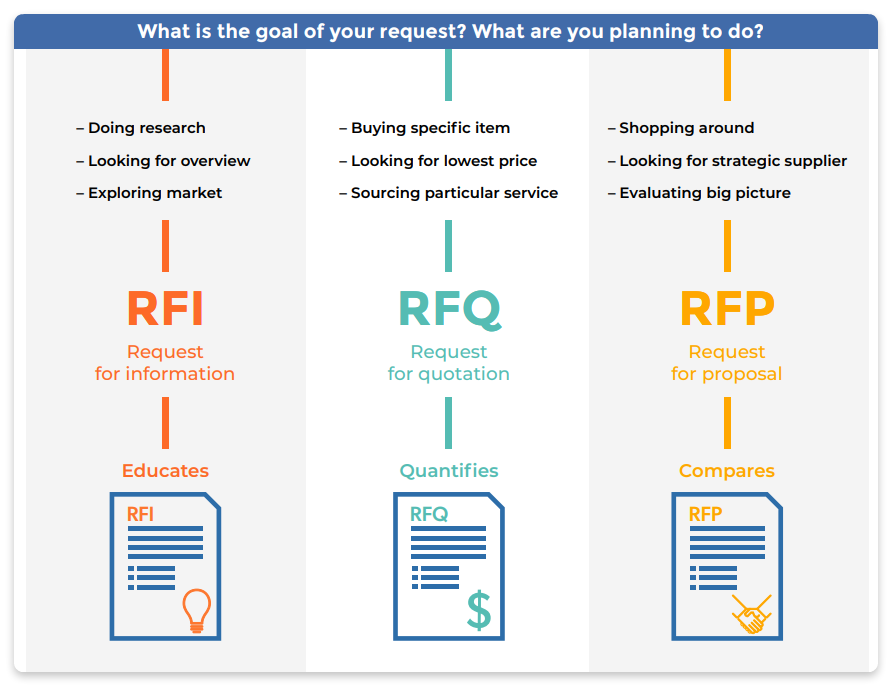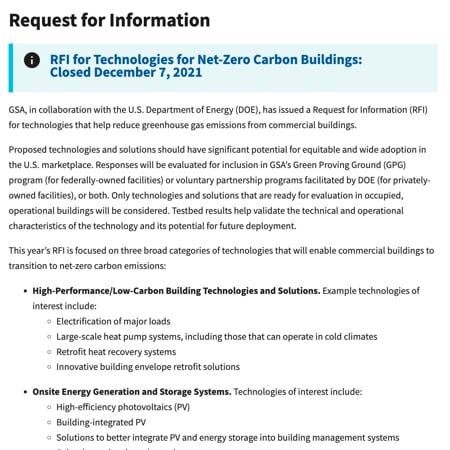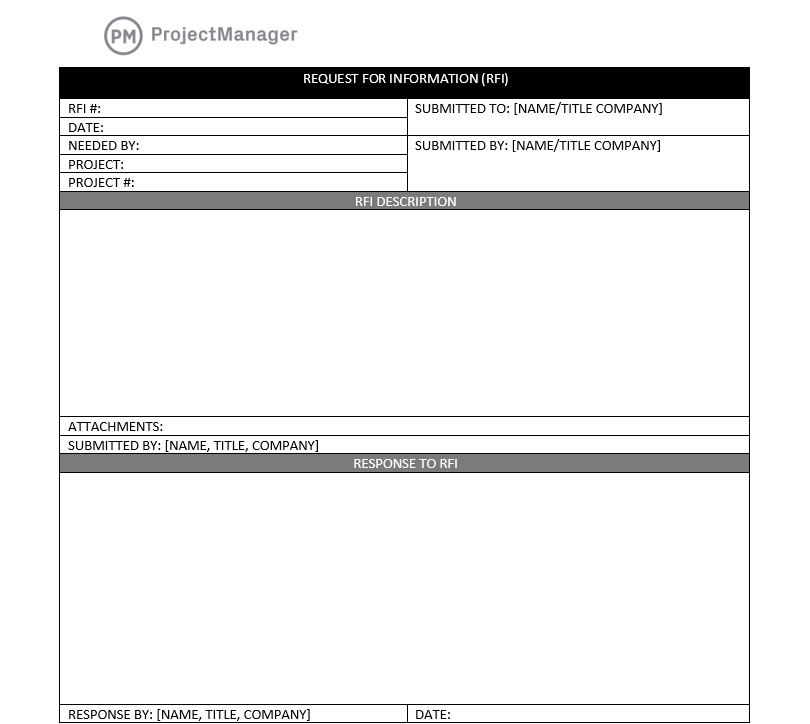
What is an RFI?
An RFI, or Request for Information, is a document used to gather information from potential suppliers about a product or service. It is a non-binding document that is typically used early in the procurement process to help buyers learn more about the market and to identify potential suppliers.
Why use an RFI?
There are several reasons why a buyer might choose to use an RFI. Some of the most common reasons include:
- To learn more about the market and the different products and services that are available.
- To identify potential suppliers and to assess their capabilities.
- To gather information about pricing and other factors that will affect the purchase decision.
- To clarify requirements and to ensure that all potential suppliers have a good understanding of the buyer's needs.
- To reduce the risk of making a bad purchase decision.
How to write an RFI
When writing an RFI, it is important to be clear and concise in your requests. You should also make sure to ask questions that will help you to gather the information that you need to make a decision. Some of the key things to include in your RFI are:
- A brief overview of your company and the product or service that you are looking for.
- A detailed description of your requirements.
- A list of questions that you would like the suppliers to answer.
- A deadline for responding to the RFI.
How to evaluate RFI responses
Once you have received responses to your RFI, you will need to evaluate them carefully. Some of the factors that you should consider when evaluating RFI responses include:
- The completeness of the response.
- The clarity and conciseness of the response.
- The supplier's understanding of your requirements.
- The supplier's proposed solution.
- The supplier's pricing and other terms.
Benefits of using an RFI
There are several benefits to using an RFI in the procurement process. Some of the key benefits include:
- Reduced risk: By using an RFI to gather information from potential suppliers, buyers can reduce the risk of making a bad purchase decision.
- Increased efficiency: An RFI can help buyers to save time and money by reducing the number of suppliers that they need to evaluate.
- Improved decision-making: An RFI can help buyers to make better purchase decisions by providing them with the information that they need to compare different products, services, and suppliers.
How to use an RFI in the procurement process
An RFI can be used at any stage in the procurement process. However, it is typically used early in the process to help buyers learn more about the market and to identify potential suppliers.
Once the buyer has received and evaluated the RFI responses, they can use this information to develop a short list of potential suppliers. The buyer can then send RFPs, or Requests for Proposal, to the shortlisted suppliers.
Examples of when to use an RFI
Here are a few examples of when a buyer might choose to use an RFI:
- When the buyer is new to the market and wants to learn more about the different products and services that are available.
- When the buyer is looking for a complex product or service and wants to ensure that they have a good understanding of their requirements before developing a detailed RFP.
- When the buyer is looking for a supplier to develop a custom product or service.
- When the buyer is looking for a supplier to provide a long-term service contract.
Tips for writing an effective RFI
Here are a few tips for writing an effective RFI:
- Be clear and concise in your requests.
- Ask questions that will help you to gather the information that you need to make a decision.
- Avoid asking subjective questions.
- Give suppliers enough time to respond to the RFI.
- Be transparent about the evaluation criteria that you will be using.
Conclusion**
An RFI is a valuable tool that buyers can use to gather information from potential suppliers and to make better purchase decisions. By following the tips above, buyers can write effective RFIs that will help them to achieve their procurement goals.
Keyword silo:
- RFI
- Request for Information
- Procurement
- Supplier
- Buyer
- Product
- Service
- RFP
- RFP
- RFQ
- Contract
- Market
- Evaluate
- Decision-making
- Risk
- Efficiency
- Transparency
WebA request for information (RFI) is an organized and formal request for the information necessary to complete a purchase or fulfill a contract. They can be paper or electronic,. WebThrough a Request for Information (RFI), governments can solicit ideas from the vendor community, subject matter experts, and community stakeholders while maintaining a. WebRFI stands for 'Request For Information,' and it is the most basic method of procuring information from a supplier before formally buying their products or.
What is an RFI (Request for Information)

Source: Youtube.com
Request for Information (RFI) Tutorial

Source: Youtube.com
What Is A Rfi Request For Information, What is an RFI (Request for Information), 3.75 MB, 02:44, 485, Nicholas Coriano, 2019-10-18T00:58:51.000000Z, 2, What is a Request for information (RFI): Meaning, example | Snov.io, 686 x 892, jpg, , 3, what-is-a-rfi-request-for-information
What Is A Rfi Request For Information. WebWhat is an RFI (request for information)? An RFI (request for information) is a formal process for gathering information from potential suppliers of a good or service. RFIs are intended to be written by customers and sent to potential suppliers. An RFI is typically.
Need help putting together an RFB, RFP, RFI or RFQ? We have helped hundreds of clients develop proposals and RFB, RFP, RFI or RFQs to win corporate and government contracts. Contact us at Cervitude.com or by email at CervitudeNetwork@gmail.com
See MicroCapCompany.com where I blog about investor relations, IPOs, scaling a business, micro-cap, and penny stock company management, startups, business advice, and feature billionaire mentor videos.
About me: My life goals include helping a billion people become millionaires, a few thousand millionaires into billionaires and to help a few hundred billionaires become trillionaires.
"Say your goals out loud!" -Nicky Nice
Buy My Book: Rules for Entrepreneurship: "Notes for living life on your terms and taking on the bull." on Amazon a.co/aQJ8T5z
Follow @CervitudeIR on Twitter for investor relations news and happenings and follow me on twitter @NicholasCoriano for motivational tweets and info on business, entrepreneurship, startups, venture capital, social media, land investing and more.
Connect with me on LinkedIn: linkedin.com/in/nicholas-coriano/
"I'm just this guy that thinks anything is possible." -N. Coriano
Text me: (224) 21-NICKY ..that's (224) 216-4259
"Don't be scared to talk 13 figure deals" -Nicky Nice
Follow Cervitude IR on Facebook at facebook.com/cervitude
What Is A Rfi Request For Information, WebRFI stands for 'Request For Information,' and it is the most basic method of procuring information from a supplier before formally buying their products or.

What is a Request for information (RFI): Meaning, example | Snov.io - Source: snov.io

RFIs: The Simple Guide to Writing a Request for Information - Source: blog.hubspot.com

Request for Information (RFI) Template - Free Word Download - Source: projectmanager.com
.
www.techtarget.com › RFI-request-for-informationWhat is RFI (request for information)? - TechTarget
An RFI (request for information) is a formal process for gathering information from potential suppliers of a good or service. RFIs are intended to be written by customers and sent to potential suppliers. An RFI is typically the first and most broad series of requests intended to narrow down a list of potential vendor candidates. What is rfi and rfp.
What is rfi and rfp
What is rfi and rfp How do you write a rfi request for information.
.
How do you write a rfi request for information
How do you write a rfi request for information What is a rfi request for information.
.
What is a rfi request for information
What is a rfi request for information How do you write a rfi request for information.
en.wikipedia.org › wiki › Request_for_InformationRequest for information - Wikipedia
Request for information. A request for information ( RFI) is a common business process whose purpose is to collect written information about the capabilities of various suppliers. [ 1] Normally it follows a format that can be used for comparative purposes. An RFI is primarily used to gather information to help make a decision on what steps to , .
.
.
www.wrike.com › blog › how-write-request-forRFIs Explained: How to Write a Request for Information | Wrike
An RFI is a formal request for information buyers send to suppliers or vendors. The procurement team of a company, responsible for buying inventory, will issue an RFI when stock is low or when there's an anticipated demand for a particular product. Typically, the RFI is a term often mentioned in the construction industry for sourcing raw , .
.
.
.
.
www.order.co › blog › procurementRequest for Information (RFI): Meaning and Examples | Order.co
A request for proposal is a document that asks suppliers to outline potential solutions for a business need or challenge. The RFP is usually a second step after the buyer receives RFI responses. The RFP is a more detailed, specific document that outlines the business problem or objectives, providing enough information and context so that , .
blog.hubspot.com › request-for-information-rfiRFIs: The Simple Guide to Writing a Request for Information
An RFI (Request for Information) is a tool used by procurement teams (buyers) to understand the options available for solving a problem or completing a task. Suppliers (sellers) respond to RFIs with information about their products and services. RFIs are important because they reduce blind spots and empower your team to make better decisions. .
acqnotes.com › request-for-informationRequest for Information (RFI) - Overview & Purpose - AcqNotes
.
www.procore.com › library › rfi-constructionRFIs: A Contractor's Guide to Requests for Information | Procore
An RFI, or Request for Information, is a business process used in construction to request clarification about documents, drawings, specifications, or other project conditions. RFIs are used to resolve information gaps, eliminate ambiguities, and capture and share specific decisions during the course of the project. .
Post a Comment